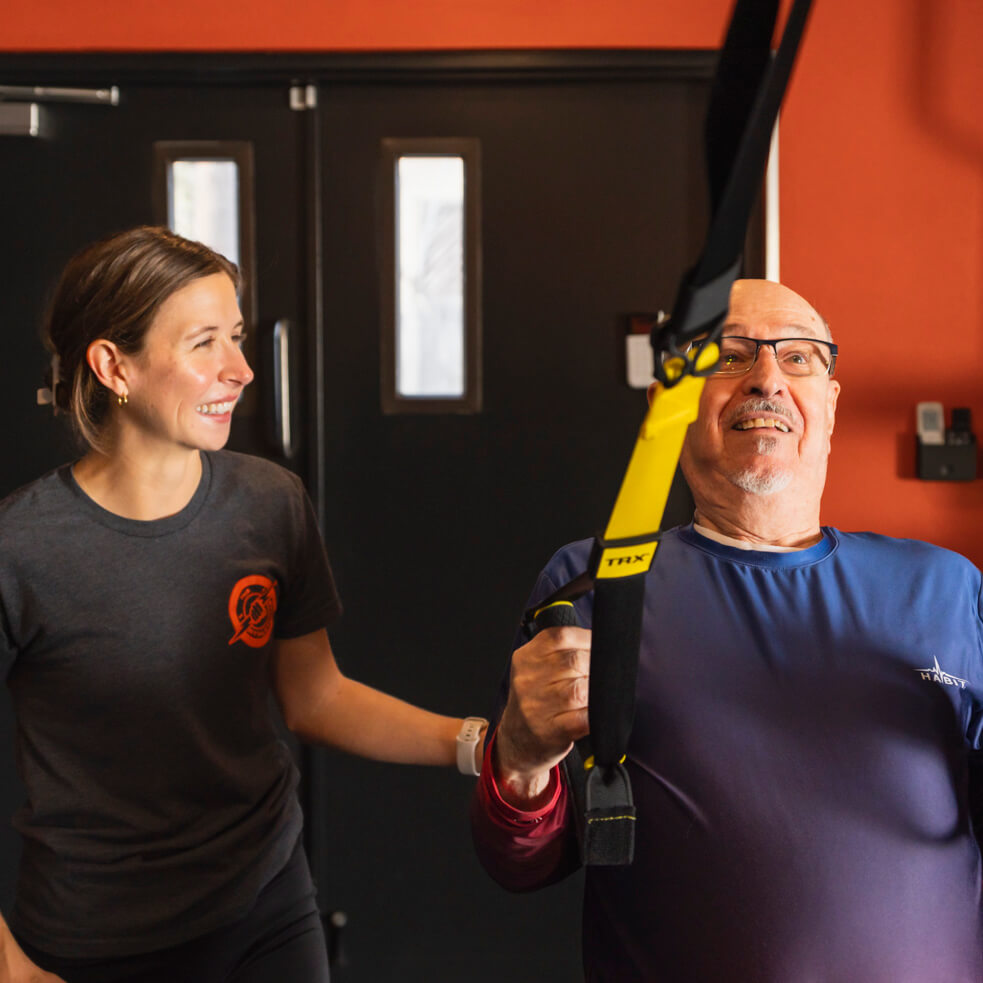The old adage, “Hindsight is 20/20,” seems to arise as we get older and realize our body isn’t quite what it used to be.
Each decade passes and we adapt to the new demands from life, whether that be from work, personal responsibilities, or even old injuries from high school or college sports. Having worked with older adults, 65 and older, the most critical skill I have encouraged and implemented has been toe exercises and balance training. These exercises are imperative to improved coordination and fall prevention.
Balance is “the even distribution of weight enabling someone/thing to remain upright and steady.” Proprioception is (a joints) awareness of where the body is in space. When a waitress stacks plates on the serving tray, this is an example of balance. When she walks backwards through the kitchen door, holds the tray high over head as she ebbs and flows through the crowded tables without dropping any meals, this is proprioception. Mindful exercise selection dedicated to these two tasks enables functional independence in our later years.
When implementing these concepts, training can be done daily and incorporated into your training programs.
From single limb exercises, such as single arm plank, a kickstand Romanian Deadlift, lunges, or kettlebell carry, to training on an uneven surface, training with eyes open and closed or another sensory deficit, proprioception can be modified or progressed through a variety of exercises. Training with an expert and using kettlebells, dumbbells, or bands are preferable over machine based exercises. Kneeling based lifting or rotations, such as front plate raises or wood chops are excellent core and balanced based activities. Multiple compound movements, such as a squat to overhead press or romanian deadlift to rows are also proprioceptive exercises. Incorporating core exercises, such as deadbugs, paloff presses, bird dogs or quadruped variations are vital for improving the awareness of one’s center of gravity.
Toe exercises, such as toe yoga (great toe and pinky toe flexion), toe flexion, toe extension, abduction and adduction, followed by any gripping activities such as towel curls, pickups, or even drawing (ABCs). Understanding how to balance by activating your toes and the lower leg muscles is imperative to activities of daily living. Building these concepts into your daily routine will drastically improve your balance and coordination today and in the years to come.




